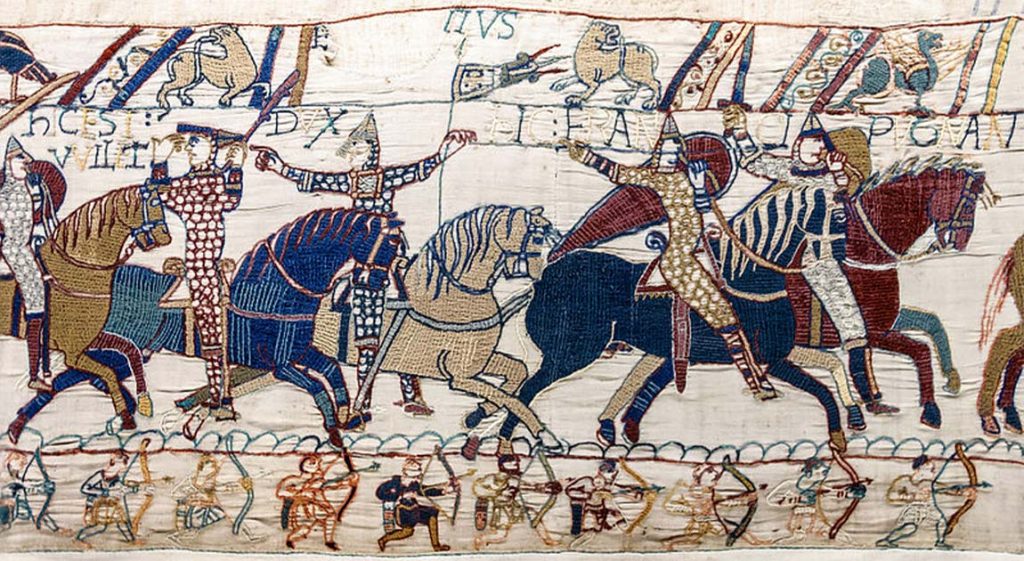A thousand years ago, in the tumultuous era of the Norman Conquest, one woman stood out as a mastermind of political intrigue and deception. Mabel de Belleme, the daughter of one of the most powerful lords in Normandy and the wife of a prominent English nobleman, wielded significant influence and amassed great wealth.
But her ambition and ruthless tactics would lead to her downfall. In a shocking twist of fate, Mabel was brutally murdered, sparking rumors and speculation that continue to this day. What did she do to earn her fierce reputation, and did she really deserve it?
Who Was Mabel de Belleme?
Mabel de Belleme was a Norman noblewoman born in the 1030s to William I Talvas, and his first wife, Hildeburg. William was a powerful Norman nobleman and member of the House of Belleme which controlled much of the Duchy of Normandy during the 10th through 12th centuries.
When her father died in 1060 Mabel inherited her father’s estates, making her a very powerful woman. This power only grew in 1070 when her uncle Yves, Bishop of Seez and Lord of Belleme, died. With his death, the rest of her family’s estates, and the political power that went with them, fell into Mabel’s hands.
Apart from her familial honor, much of Mabel’s power came from her marriage to Roger II de Montgomery, who would later become the 1st Earl of Shrewsbury. Roger was a favorite of Duke William of Normandy, who had just sailed across the English Channel and earned himself another title: William the Conqueror.

Roger hadn’t taken part in the Norman conquest of England and had instead stayed behind in Normandy. During this time, he had acted as co-regent alongside William’s wife, Matilda of Flanders. He had further won William’s favor by contributing 60 ships to William’s initial invasion force.
Roger and Mabel journeyed to England in 1067 and William rewarded them with the earldom of Shropshire and numerous estates. Between the two of them, they were one of the largest landholders in the Domesday Book. Combined, Mabel and her husband were two of the biggest movers and shakers in Norman England.
How Did She Earn Her Reputation?
Much of what we know about Mabel comes from the Historica Ecclesiastica, written by the English Chronicler and Benedictine monk Orderic Vitalis. Orderic made it clear in his records that Mabel was a deeply ambitious and ruthless woman who was not to be trusted, describing her as, “small, very talkative, ready enough to do evil, shrewd and jocular, extremely cruel and daring.”
But what did she do to deserve such a reputation? Well, there’s little doubt that Mabel was a schemer who would do whatever it took to push her family forward.
For example, she could be incredibly vindictive. Her family had a historic feud with the Giroie family, another group of powerful Norman nobles. Rather than letting the feud die with her father, she decided to make it even worse.
The feud had begun, quite understandably, when her father mutilated William Fitz Giroie at his wedding celebration. Years later, Mabel decided to take down his heir, Arnold de Echauffour.
She did this by convincing Duke William that Arnold was disloyal. She told William to confiscate part of Arnold’s estates and give them to her and her husband. Which he did.
This plan worked until 1063 when the Duke promised to forgive Arnold and restore his lands. This led to Mabel trying to kill Arnold.
She did so by poisoning his wine, which he refused to drink. Unfortunately, her brother-in-law drank the wine instead, dying shortly afterward. Undeterred, she bribed Arnold’s chamberlain to poison him, which he successfully did.
Her reputation also likely comes from the fact that she did not get on well with the clergy and did whatever she could to upset them. In particular, she played havoc with the abbey of Saint-Evroult.
Throughout 1064 she repeatedly visited the abbey for extended stays with a large retinue of soldiers. The Abbey was obliged to host her and her men, which put an extreme burden on the Abbey’s limited resources.
When the abbot, Theodoric, told her off for her cruelty she simply threatened to return with an even larger group. The abbot warned her that if she did not change her ways, she would suffer great pains. Supposedly that evening she did and was forced to flee the abbey.
- Queen Ranavalona I: Most Murderous Woman in History
- The Suspicious Death of William II: Who Killed the Rufus?
That doesn’t mean she had learned her lesson. Throughout her life, Mabel continued her wicked ways, and her schemes and plots cost many nobles to lose their lands and livelihoods. But Mabel was too clever for her own good and one of the plots proved to be her undoing.
An End to the Scheming
In 1077 Mabel succeeded in seizing the hereditary lands of Hugh Bunel, a rival noble, by force. Unfortunately for Mabel, he didn’t take it lying down. Two years later Mabel was staying at the castle of Bures in Normandy when Hugh and his three brothers snuck into the castle.

As Mabel was coming out of the bath Hugh pounced, taking off her head with his sword. He and his brothers were pursued by the castle’s guards but escaped by destroying a bridge behind them. Mabel was buried three days later at Troarn, Normandy.
So, did Mabel deserve her reputation as a schemer? If we go by the historical record things seem pretty clear-cut. But we have to be careful before jumping to conclusions. Besides the work of one Benedictine monk, we have limited information about her life and motivations.
Much of the information we have about Mabel comes from medieval chroniclers, who were often biased in their accounts and who may have exaggerated her reputation as a schemer for their own purposes. Women who wielded power and influence in medieval Europe were often viewed with suspicion and mistrust by their contemporaries, so it is possible that Mabel’s reputation as a schemer was partly the result of gendered stereotypes and prejudices.
It also seems that much of Mabel’s reputation comes down to the actions of her sons. They too had reputations for being cruel schemers and were major players in the failed rebellion against King Henry I in 1102. Mabel was long dead by then, but contemporary historians still managed to lay much of the blame at Mabel’s feet.
Mabel’s story is often told as an example of the power and influence that women could wield in medieval Europe, even in a society that was dominated by men. Despite the fact that she lived more than 900 years ago, Mabel’s story continues to captivate historians and scholars today.
Top Image: Mabel de Belleme schemed to increase her landholdings and poison her enemies, but was her reputation deserved or a partial fiction? Source: Guy / Adobe Stock.
By Robbie Mitchell